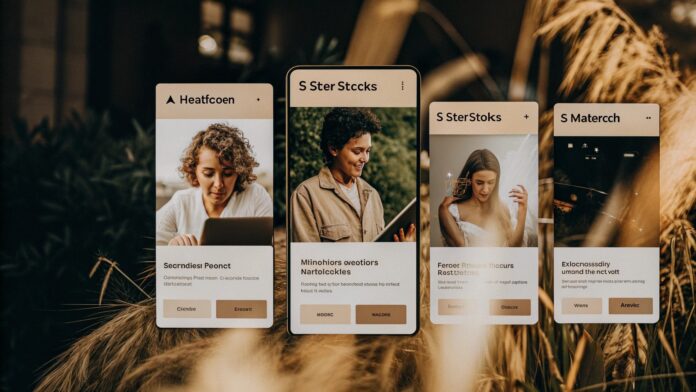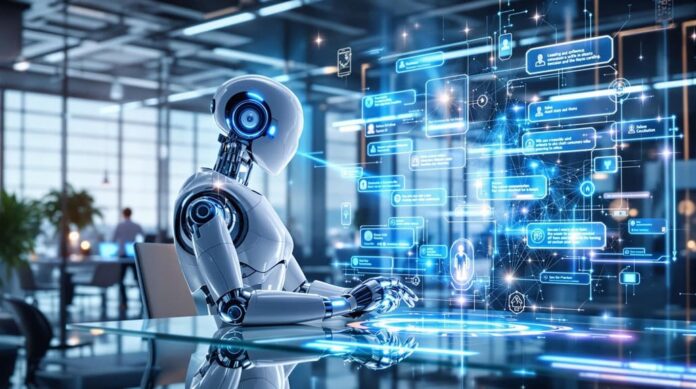Technology has become the heartbeat of modern life. From the moment we wake up and check our phones to the time we fall asleep scrolling through social media or watching a show, technology is there — quietly shaping our thoughts, actions, and connections. Over the past few decades, it has transformed how we communicate, work, learn, and even think. But while technology brings incredible convenience and opportunities, it also introduces challenges that affect our health, relationships, and environment.
Let’s take a closer look at how technology impacts modern society — both the good and the not-so-good sides — and what the future may hold.
1. Communication: The World Has Become a Global Village
One of the most noticeable impacts of technology is how it has changed the way people communicate. Just a few decades ago, letters and landline calls were the main means of long-distance communication. Today, we can instantly message someone across the world through apps like WhatsApp, Zoom, or social media platforms.
This instant connection has made the world feel smaller. Families can stay in touch, friends can share experiences in real-time, and businesses can collaborate across continents without leaving their offices. Social media platforms have given everyone a voice and a chance to share ideas, stories, and cultures.
However, there’s another side to this digital communication. Constant online interaction can sometimes reduce the quality of face-to-face conversations. Many people feel more comfortable texting than talking in person, leading to loneliness and shallow relationships.
2. Education: Learning Has No Boundaries
Technology has completely changed how we learn and access information. In the past, education was limited to classrooms and libraries. Now, with the internet, students can learn from anywhere in the world. Online courses, digital libraries, and educational apps have made knowledge more accessible than ever.
Platforms like Coursera, Khan Academy, and YouTube offer free lessons on almost any topic imaginable. This democratization of knowledge has opened opportunities for millions of people who previously couldn’t afford traditional education.
But there’s a downside too. With so much information online, it’s easy to get lost or consume misinformation. The challenge today is not accessing knowledge but learning how to find reliable and accurate information. Moreover, too much screen time and dependency on devices can reduce attention spans and affect students’ critical thinking skills.
3. Work and Employment: A New Era of Productivity
Technology has revolutionized the workplace. Computers, automation, and artificial intelligence (AI) have made work faster, more efficient, and less physically demanding. Remote work — once a rare option — has become common, especially after the COVID-19 pandemic. Employees can now work from home using digital tools like Zoom, Slack, and Google Workspace.
Businesses also benefit from automation and data analytics, which help them make smarter decisions and improve customer service. For example, e-commerce companies use AI to suggest products based on customer preferences, improving sales and satisfaction.
However, technology has also brought challenges to the job market. Automation and robots have replaced many manual and repetitive jobs. While technology creates new opportunities, it also requires new skills. Workers who don’t adapt to the changing digital environment risk being left behind.
4. Health and Medicine: Life-Saving Innovations
One of the most positive impacts of technology is in healthcare. Modern medicine has advanced beyond imagination thanks to technological innovations. We now have telemedicine, wearable devices that track health, robotic surgeries, and AI tools that can detect diseases earlier than doctors.
Patients can consult doctors online, access medical records digitally, and monitor vital signs with smartwatches. These tools make healthcare more efficient and accessible, especially for people in remote areas.
But technology can also contribute to health problems. Excessive screen time, sedentary lifestyles, and social media addiction can lead to mental health issues such as anxiety, depression, and low self-esteem. Finding a balance between digital health tools and physical well-being is essential for maintaining a healthy lifestyle.
5. Social Life and Relationships: Closer Yet Farther Apart
Technology has changed how we form and maintain relationships. Social media platforms like Facebook, Instagram, and TikTok allow people to share their lives with others instantly. Online dating apps have made it easier to find partners, and gaming communities bring together people with shared interests.
However, constant digital connection can sometimes lead to emotional disconnection in real life. Many people compare themselves to others online, which can create feelings of inadequacy and loneliness. Instead of enjoying the moment, people often focus on capturing it for social media.
Real relationships need emotional presence, something that no amount of technology can replace. While technology connects us, it’s important not to let it replace genuine human interaction.
6. Environment and Sustainability: A Double-Edged Sword
Technology has had both positive and negative effects on the environment. On one hand, innovations like renewable energy, electric vehicles, and smart farming help reduce pollution and conserve natural resources. Scientists use advanced technology to monitor climate change and find sustainable solutions.
On the other hand, the production and disposal of electronic devices contribute to e-waste, pollution, and energy consumption. The demand for new gadgets and short product lifespans adds more pressure on the environment.
The challenge is to use technology responsibly — focusing on eco-friendly innovations and recycling to minimize harm to the planet.
7. Entertainment and Lifestyle: A Digital Revolution
Entertainment has completely transformed thanks to technology. We no longer rely solely on television or radio. Streaming platforms like Netflix, Spotify, and YouTube have made movies, music, and shows available anytime, anywhere.
Social media influencers, gamers, and content creators have built entire careers online, showing how technology can create new industries. Virtual reality (VR) and augmented reality (AR) are also reshaping how we experience entertainment, allowing us to enter new worlds from the comfort of our homes.
However, the digital lifestyle can be addictive. Endless scrolling, binge-watching, and online distractions can reduce productivity and affect sleep and mental health. Like everything else, balance is the key.
8. The Future: Technology as a Tool, Not a Master
Technology will continue to evolve faster than ever. Artificial intelligence, automation, robotics, and quantum computing will change every part of society — from education to medicine to entertainment. But the real question is: how will we use it?
Technology itself is neutral — it’s how humans use it that determines its impact. If used wisely, it can solve major global problems like poverty, disease, and climate change. But if misused, it can increase inequality, job loss, and privacy issues.
The future depends on finding a balance between technological progress and human values — compassion, ethics, and responsibility.
Conclusion
The impact of technology on modern society is undeniable. It has made life faster, smarter, and more connected than ever before. We can communicate instantly, learn endlessly, and achieve goals once thought impossible. But with great power comes great responsibility.
Technology should be our tool — not our master. As we continue to innovate and explore, we must remember to stay human: to connect, to feel, and to live beyond the screen. The true progress of society lies not just in smarter machines, but in wiser humans who know how to use them.
FAQs
1. How has technology changed the way we communicate?
Technology has made communication instant and global through emails, social media, and messaging apps. However, it has also reduced face-to-face interactions and emotional depth in some cases.
2. What are the main benefits of technology in education?
Technology makes learning accessible to everyone through online courses, e-books, and educational apps. It helps students learn at their own pace and provides global access to information.
3. How does technology affect our health?
While medical technology improves diagnosis and treatment, excessive screen time and digital dependence can lead to stress, eye strain, and mental health issues.
4. Can technology harm the environment?
Yes. The production and disposal of electronics create e-waste and pollution. However, eco-friendly innovations like solar energy and electric vehicles can reduce environmental harm.
5. What is the biggest challenge of modern technology?
The biggest challenge is balance — using technology to improve life without losing our human connection, privacy, and well-being.



